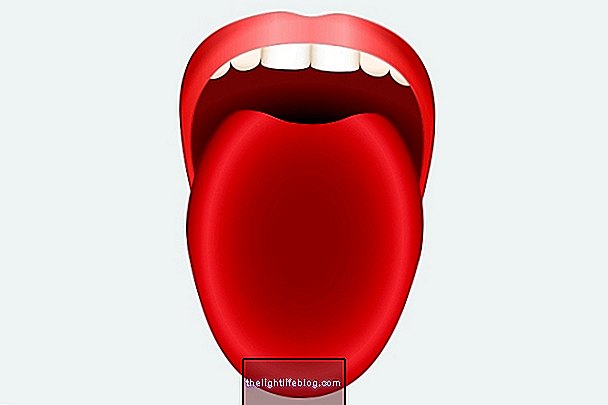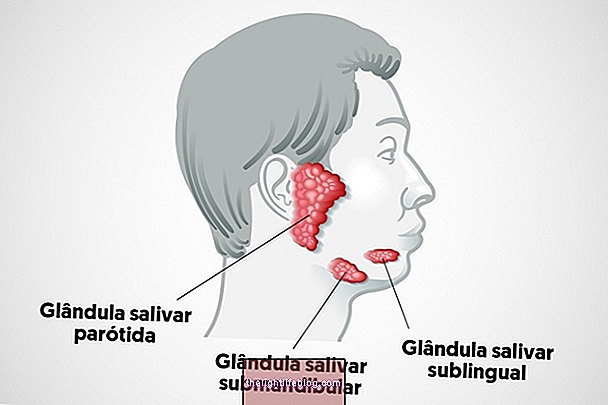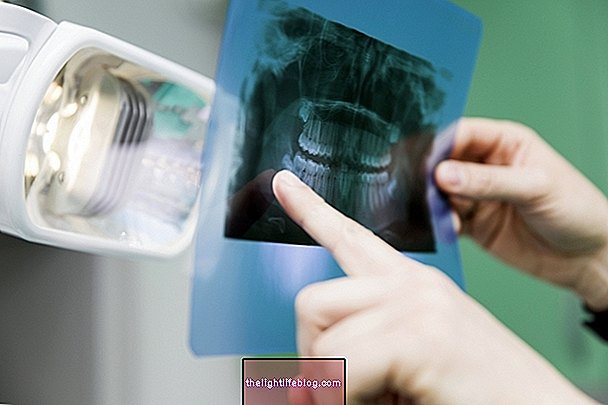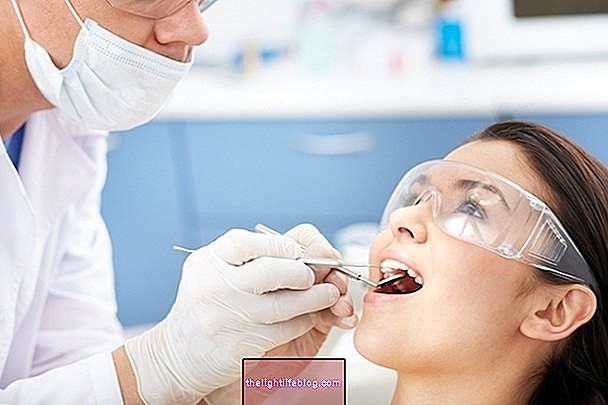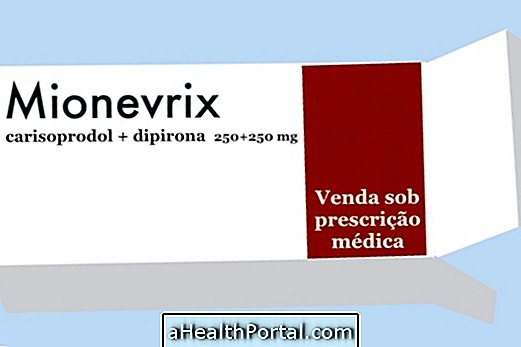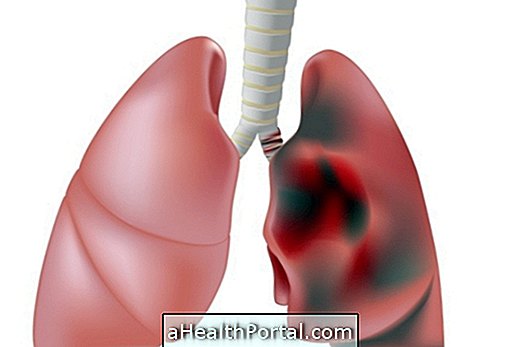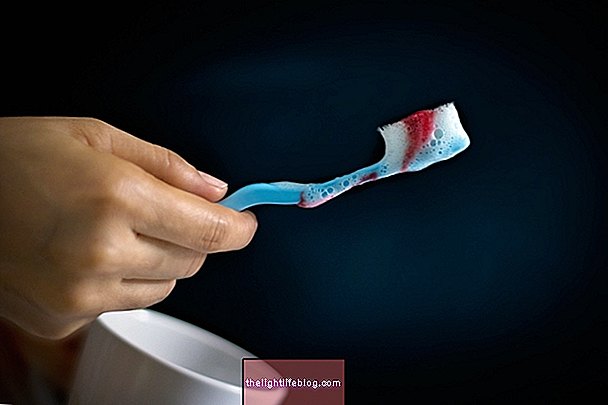Ludwig's angina is a situation that can happen after dental procedures, such as tooth extraction, for example, especially in people with weakened immune systems, being caused mainly by bacteria that can easily reach the bloodstream and increase the risk of complications, such as respiratory failure and sepsis.
Symptoms of ludwig's angina can appear hours after the procedure, being characterized by increased saliva production, high fever, pain and difficulty opening the mouth and swallowing. It is important that the diagnosis is made as soon as the first symptoms appear, as it is then possible to start the treatment immediately afterwards, which usually involves the use of antibiotics.

Main symptoms
The signs and symptoms of ludwig's angina can appear hours after the dental procedure, and there may be:
- Increased saliva production;
- Difficulty and pain to swallow;
- High fever;
- Weight loss;
- Voice alteration;
- Elevation of the tongue, which can cause the feeling of suffocation;
- Presence of secretion with blood and strong smell;
- Difficulty opening your mouth correctly;
- Swelling at the procedure site.
Ludwig's angina is more common in people who have some of the risk factors, such as excessive consumption of alcoholic beverages, diabetes, kidney problems, use of immunosuppressive drugs, diseases that decrease immunity, presence of tongue piercing, aplastic anemia or neoplasms in the oral cavity.
The diagnosis of this type of angina is very important, since the disease has a rapid evolution and can be associated with several complications. Thus, it is important that the diagnosis be made as soon as the first signs and symptoms appear, and the performance of radiography and computed tomography is usually indicated.
In addition, laboratory tests such as blood count, tests that assess kidney function, and microbial culture followed by an antibiogram may also be recommended to identify the infectious agent and the best antibiotic to combat it.
Causes of ludwig's angina
Most cases of ludwig's angina are related to bacterial infection after tooth extraction, especially in people with compromised immune systems, with bacteria being more often related to the situation. Streptococcus viridans, Staphylococcus aureus andPrevotella melaninogenica. These bacteria are able to proliferate at the site and spread through the bloodstream quickly, which increases the risk of complications.
However, in addition to the infection, ludwig's angina can arise due to fractures in the jaw, abscess in the amygdala, cuts in the oral mucosa, presence of foreign bodies in the mouth, cysts or tumors at the site or sialolithiasis, in which small stones are formed. saliva leading to pain, swelling and difficulty swallowing, for example. See what sialolithiasis is and how to identify it.
Possible complications
Complications of ludwig's angina are related to the bacteria's ability to proliferate and spread rapidly through the bloodstream, reaching other organs. Thus, it can reach the mediastinum, which is one of the cavities of the chest, promoting compression of the heart and reaching the lungs, which can lead to severe respiratory failure.
In addition, due to the spread of the microorganism into the bloodstream, there may also be sepsis, which is a serious situation and can also lead to death, since it promotes changes in the functioning of the organs. Learn how to identify sepsis.
How treatment should be
Treatment for ludwig's angina should be started soon after diagnosis to decrease the risk of complications, with antibiotics usually being indicated initially to fight the microorganism responsible for the infection, decrease its multiplication rate and relieve symptoms.
In addition, drainage and removal of the infectious focus is most often performed with the aim of completely eliminating the bacteria involved with angina and, thus, avoiding the appearance of complications. It is also recommended that the airways be maintained, promoting the person's quality of life. In more severe cases, tracheostomy may be indicated.
Was this information helpful?
Yes No
Your opinion is important! Write here how we can improve our text:
Any questions? Click here to be answered.
Email in which you want to receive a reply:
Check the confirmation email we sent you.
Your name:
Reason for visit:
--- Choose your reason --- DiseaseLive betterHelp another personGain knowledge
Are you a health professional?
NoMedicalPharmaceuticalsNurseNutritionistBiomedicalPhysiotherapistBeauticianOther
Bibliography
- GUINELLI, Jéssica L. et al. Ludwig`s Angina. Robrac. 2007
- FOGAÇA, Patrícia F. L et al. Ludwig's Angina: A Serious Infection. Portuguese Journal of Stomatology, Dental Medicine and Maxillofacial Surgery. Vol 47. 3rd ed; 2006
- DIB, Jamil Elias et al. Ludwig's Angina with Evolution to Mediastinitis. Case report. Rev. Cir. Traumatol. Buco-Maxilo-Fac. Vol 16. 4 ed; 30-35, 2016
- CANDAMOURTY, Ramesh et al. Ludwig's Angina - An emergency: A case report with literature review. J Nat Sci Biol Med. Vol 3. 2 ed; 206-208, 2012
